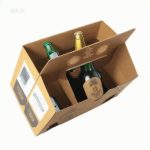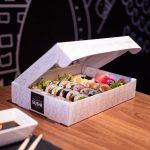
In today’s competitive food industry, packaging is far more than a mere container—it’s a silent ambassador for your brand, a storyteller that engages customers before they even take the first bite. Food packaging box design has evolved from a functional necessity to a powerful marketing tool that can elevate the entire dining experience. From the moment a customer lays eyes on your product, the packaging sets the tone, communicates values, and creates an emotional connection that can turn first-time buyers into loyal advocates.
Great food packaging begins with understanding your audience. Are you targeting health-conscious millennials who appreciate minimalist, eco-friendly designs? Or perhaps gourmet food enthusiasts who expect luxury and sophistication? The colors, materials, and typography you choose should resonate with your target demographic while staying true to your brand identity. A vibrant, playful design might work perfectly for a artisanal cookie company, while a high-end steakhouse might opt for elegant, understated packaging that whispers quality and exclusivity.
Functionality remains paramount in packaging design. The most beautiful box becomes worthless if it fails to protect its contents or makes transportation difficult. Innovative designers are now creating packaging solutions that maintain food temperature, prevent leakage, and ensure structural integrity while being easy to assemble, store, and dispose of. The rise of delivery services has further emphasized the need for packaging that can withstand the journey from kitchen to doorstep while keeping food presentation intact.
Sustainability has become non-negotiable in modern packaging design. Environmentally conscious consumers increasingly favor brands that demonstrate ecological responsibility through their packaging choices. This has led to exciting innovations in biodegradable materials, plant-based inks, and designs that minimize waste without compromising on aesthetics or functionality. The most forward-thinking companies are creating packaging that customers want to reuse or repurpose, extending the brand experience beyond the initial purchase.
The unboxing experience has emerged as a crucial aspect of packaging design in the social media age. Instagram-worthy packaging can generate valuable organic marketing as customers share their purchases online. Thoughtful touches like personalized messages, easy-open mechanisms, and interior compartments that create a reveal moment can transform a simple transaction into a memorable event. This sensory experience—the sound of opening, the texture of materials, even the scent—contributes significantly to perceived quality and customer satisfaction.
Technology integration is pushing packaging design into new frontiers. QR codes that link to cooking instructions or brand stories, augmented reality features, and smart labels that indicate freshness are becoming increasingly common. These technological elements add value and interactivity while providing brands with valuable data about how customers engage with their products. The packaging becomes not just a container, but a gateway to a broader brand experience.
Ultimately, successful food packaging design strikes a delicate balance between form and function, sustainability and practicality, brand expression and customer needs. It requires thoughtful consideration of every element—from the structural engineering to the smallest graphic details. In a world where consumers are overwhelmed with choices, your packaging might be the deciding factor that makes someone choose your product over a competitor’s. Invest in exceptional packaging design, and you’re not just selling food—you’re selling an experience, a story, and a relationship that keeps customers coming back for more.




Leave a Message